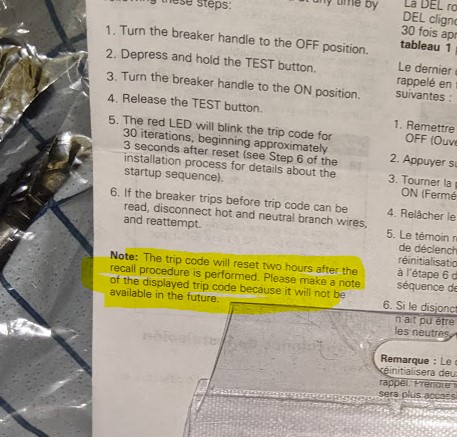Where to start?
*We bought a new house on a day's notice, and now I have to sell this 1885 Victorian. I'd like to minimize the scope of a home inspector's report. *The house is mostly the original 2-wire, but has a modern breaker box. *I replaced every 2-prong outlet with 3-prong outlets, so it's not to code. *I'm an EE, but I'm stumped here...
So I just replaced the breaker for the entire upstairs (4bd/1ba) with an Eaton model# BRLAFGF115CS AFCI/GFCI breaker and planned to add the requisite stickers to each of the un-grounded outlets to meet NEC 2014 code requirements. Upon installation, I performed the initial diagnostics and received an error code on the red LED with 5 blinks, indicating a "ground fault."
This is weird, because even though the breaker indicates a ground fault on this ancient cloth-insulated wiring that must be 1000 feet long in total, this apparent ground fault is not enough to actually trip the GFCI. I mean, does that suggest it's less than 6mA? Given all the mouse hair and dust and other debris I pulled out of those boxes I entered, I'd have been surprised if I didn't have a good deal of ground leakage. The arc and GF test button does trip the breaker, but the 5-blink "ground fault" code seems to not be bad enough to actually trip the GFCI.
Of course, I unplugged everything on the circuit and turned off all the lights, retested, but I still get the 5-blink code. Eaton is no help. I wonder if the GFCI circuit is seeing leakage of less than 6mA and just letting me know, but it's not enough to trip the GFCI? I want the darn blinking to go away, but I don't want to open up 50 boxes and clean all the mouse turds and hair out of those and not solve the problem. Any thoughts? What would you do? I'm on the circuit right now -- at my computer -- so the breaker's holding just fine -- even with a few inductive/resistive loads like fans and space heaters. Weird. I'd like to get this house on the market ASAP, but I don't want to cause alarm and start smashing all this lovely 1885 plaster. This house is 99% original. My plan was to install this one breaker as a test, and then replace all the rest of the breakers that service un-grounded outlets... Also, I can't find a place to buy all those stickers I need.
Thanks in advance!
-Doogan

